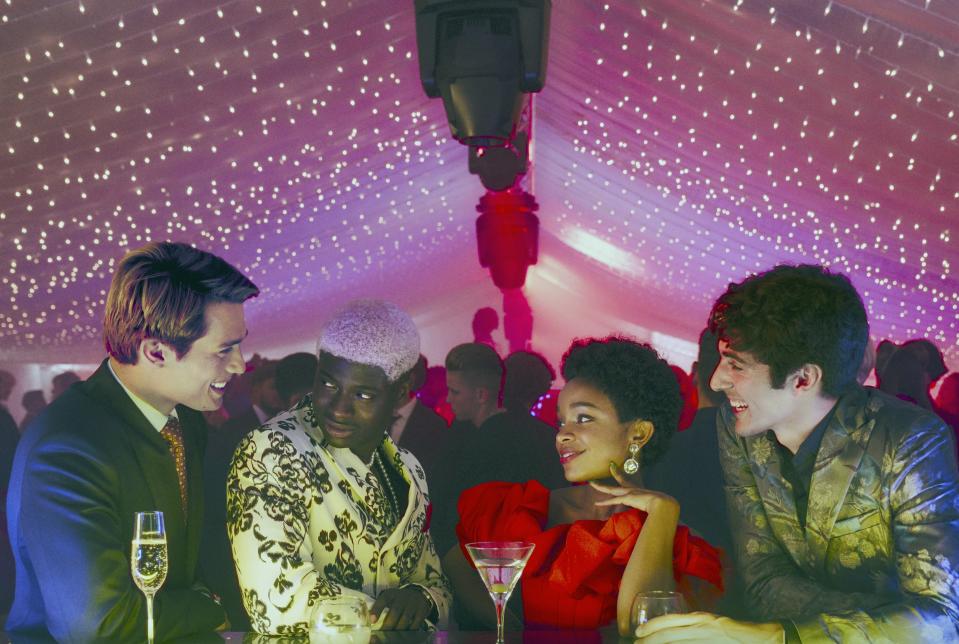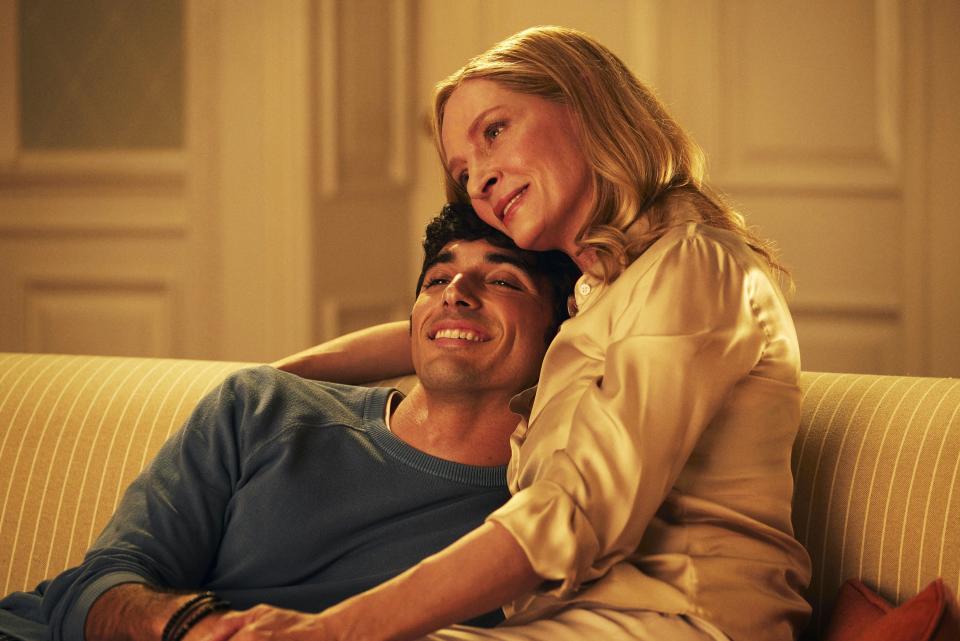5 Major Changes the ‘Red, White & Royal Blue’ Movie Made from the Book

- Oops!Something went wrong.Please try again later.
- Oops!Something went wrong.Please try again later.
All products and services featured are independently chosen by editors. However, StyleCaster may receive a commission on orders placed through its retail links, and the retailer may receive certain auditable data for accounting purposes.
After four long years of waiting, fans of Casey McQuiston’s best-selling debut novel, Red, White & Royal Blue, got a feature film of the same name. The general consensus is that it’s good — really good. And killed in the ratings, becoming the No. 1 movie globally on Prime Video in its premiere weekend. But there are some major differences in Ted Malawer’s script he co-wrote with director Matthew López. They might seem minor but for fans of the book, they’re anything but.
Today's Top Deals
Run, Don't Walk: This Cuisinart Ice Cream Maker Is Almost Half-Off at Amazon
These On-Sale Sandals Are So Comfortable, Shoppers Say It Feels Like They're 'Walking on a Cloud'
I was one of the ones excited about the film but with concerns. I was worried the leads wouldn’t have chemistry based on some interviews and photoshoots released. Taylor Zakhar Perez plays Alex Claremont-Diaz, the son of the sitting President of the United States, and Nicholas Galitzine is Prince Henry, the spare heir to the British throne. I was wrong. They were cast well and their romance was believable in the cute rom-com way we want.
But some of the changes confused me. In an interview with People, López explained some of the changes as a whole. “Anything that wasn’t about Alex and Henry didn’t belong in the film. Anything that didn’t feed into that story had to go. It’s just the logic of movie storytelling,” he said. “There’s actually less than 20 seconds of the film in which one or the other doesn’t appear.”
But as a fan of the book, I’d argue some of the characters do contribute to Alex and Henry’s relationship. Of course, there’s no way they could get it all into a movie, which is why it could have been cool to see it adapted into a series instead.
Below, are some of the biggest changes in the novel vs the Red, White & Royal Blue movie. And if you haven’t read the book yet, what are you waiting for?
1. Where was June?
The most glaring omission for me was the character of June Claremont-Diaz, Alex’s hilarious and supportive sister and a member of the “White House Trio” with Alex and Nora Holleran (the Vice President’s granddaughter). June is a huge part of Alex’s life in the book, even pretending to date Henry to help keep the couple’s secret. She’s also a fully realized character herself, one I related to as a journalist who is also interested in politics. It would have been fun to see someone like Jenna Ortega play her.
In an interview with Entertainment Weekly, López acknowledged the “most controversial change.” He said: “It was the possibility of having two young actors playing Nora and June, each of whom would have very little to do in the movie as a result of the two of them being there. I worried about two actresses having half a meal and neither being given a real chance to shine. I had the worry that they would fade into the background as a result. On set, we’d often say ‘R.I.P. June’ because I took what I needed from her story and gave it to Nora.”
June wasn’t the only change to the First Family but I found the other ones pretty minor. Alex’s parents, President Ellen Claremont and Oscar Diaz (played by Uma Thurman and Clifton Collins Jr.) are still married instead of divorced like in the books. In addition, Henry’s grandmother Queen Mary is swapped out for his grandfather, King James III (Stephen Fry). The director wanting to work with Fry was a big reason for the change. “I had been trying to find something to do with Stephen for quite a while,” he told ET. “So I said, ‘Let’s just make it a king. This is a perfect thing for Stephen.’ I mean, at the end of the day, if you’ve got Stephen Fry, why wouldn’t you?”

2. Princess Beatrice is barely there.
In the film, we get small glimpses of Princess Beatrice, Henry’s supportive sister. But in the book, she’s also a fully realized character, a recovering cocaine addict dealing with the death of her father. In fact, it was a pretty heartbreaking moment when Bea’s rehab stint comes to life when Alex and Henry’s emails become public.
The rest of Henry’s family is pretty MIA as well. In the film, Henry’s mother Catherine is mentioned as saving elephants in Botswana, while in the novel, she is pretty badass (through the grief of losing her husband), defending her son’s relationship to the Queen.
3. Alex’s sexuality is more defined.
Alex is bisexual, something he seems pretty confident with in the film, even going so far as to talk to his mother, the President, about PrEP and Truvada. In the novel, it’s much more nuanced. His only real experience with men is when he “messed around” with his best friend Liam (also missing from the film). It’s an important moment in Alex’s life when Nora helps him realize he’s bisexual and he apologizes to Liam for not being a great friend or sexual partner in the past.
In the interview with ET, López explains why he made this change. “One, it’s a slightly older Alex than what is in the book,” he said. “It is also more efficient storytelling to not see too much, because the other thing you lose in a movie that you do have in a book is interior monologue. In a movie, a character’s only defined by action. I needed something that was act-able. So Alex says, ‘I can wrap my head around being low-level into guys, but what I’m really confused about is being into Henry.’ I wanted that to be Alex’s real hang-up. I wanted to present someone who hasn’t really thought about giving himself a label, but the fact that he is ‘low-level into guys’ is not a surprise to him. But he has not yet had any reason to self-identify until Henry gives him one.”

4. Rafael Luna is MIA.
One of my favorite characters in the book is the openly gay Latino senator from Colorado, Rafael Luna. In the book, his friendship with Alex is complicated but strong, since Alex helps him get elected to the senate. Rafael is a mentor to Alex and even helps his mom get re-elected by uncovering a scandal in Republican senator Jeffrey Richards’ presidential campaign. It would have been nice to see Alex have an older gay man to help him navigate his feelings for Henry in the film.
The Richards campaign is also responsible for the leak of Alex and Henry’s emails and photographs. In the movie, López created a new villain, political reporter Miguel Ramos (Juan Castano). “The Luna stuff and the Richards stuff in the book, I knew that it would become a morass of complications that were unnecessary to understanding the conflict in the movie,” López told ET. “I needed to create a very simple-to-execute, simple-to-understand, simple-to-extricate complication in the movie, which is why I decided to jettison the role of Luna altogether and the intrigue with the Richards campaign.”
5. History, huh?
One of the most iconic moments in McQuiston’s book is when Alex writes “History, huh? Bet we could make some” to Henry in an email. After the emails are leaked, this becomes the couples’ catch phrase and supporters wear it on T-shirts and write it on signs in a beautiful display of support. In the film, Alex says it to Henry out loud while they tour the Victoria and Albert Museum late at night.
López told ET that he “decided it would be more powerful to have Alex say the line in the V&A scene instead of hearing it in voiceover in the emails, which is how it is in the book.” While there is something nice about it being a private moment between the two of them, I love how it becomes a rallying cry for the couple’s supporters in the book and I missed that moment.
As with any book-to-movie adaptation, I have my quibbles with the changes and I stand behind thinking it could be a great series. But overall, both pieces of art stand on their own as one of the great rom-coms of our time. Hurry and watch it on Amazon Prime Video now.
Best of StyleCaster

